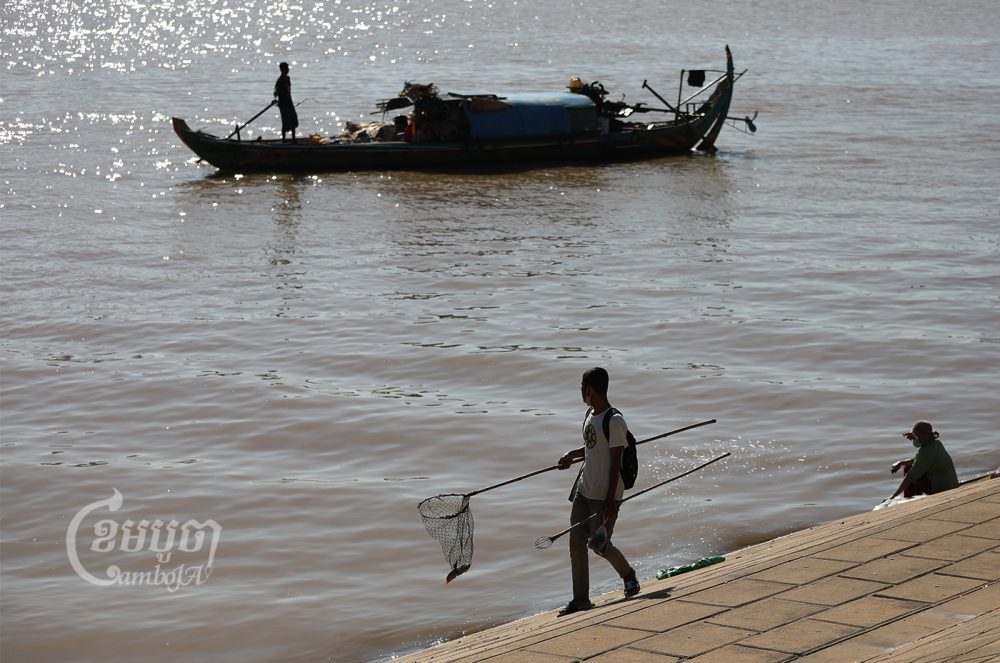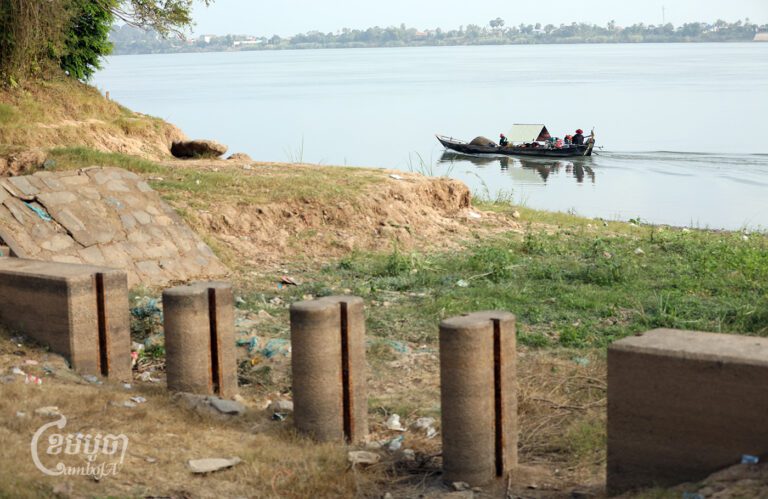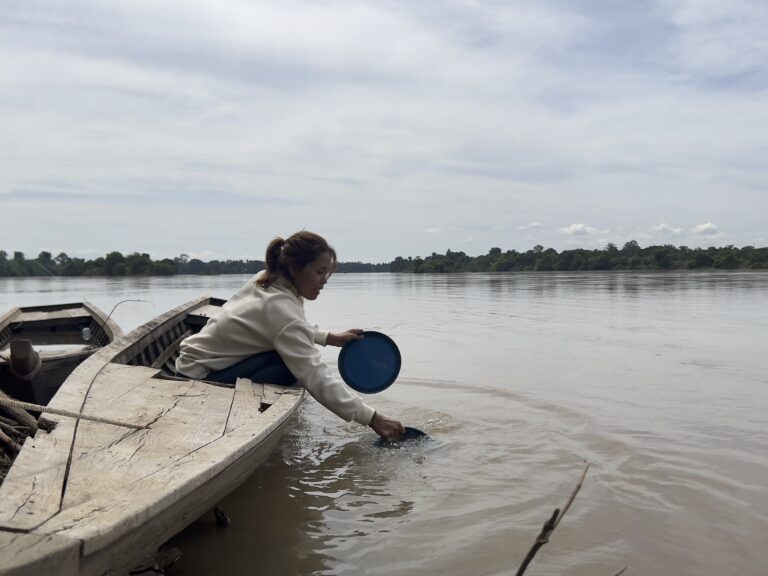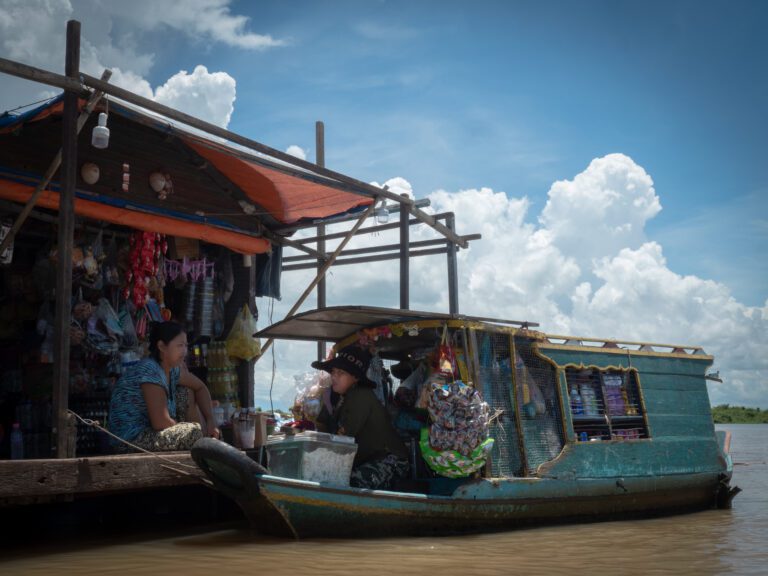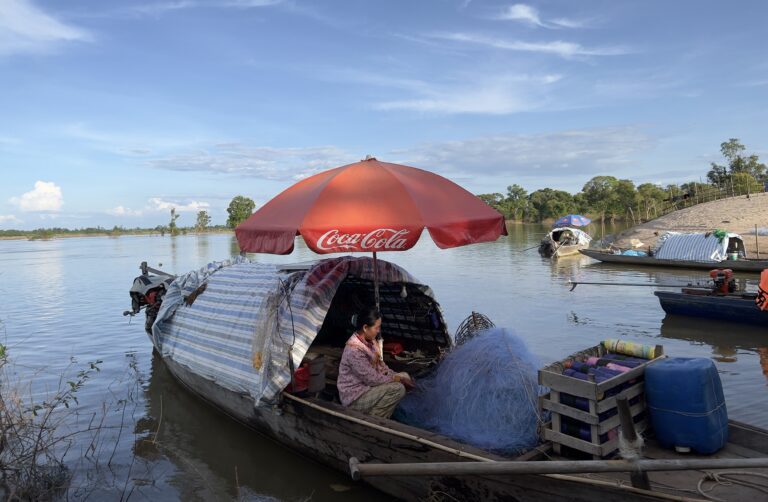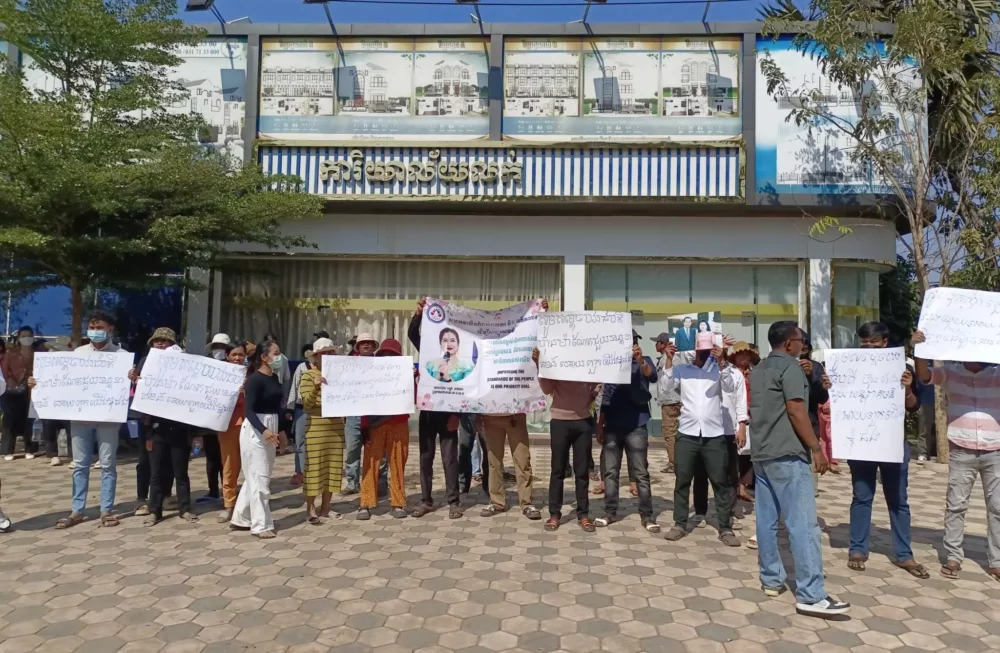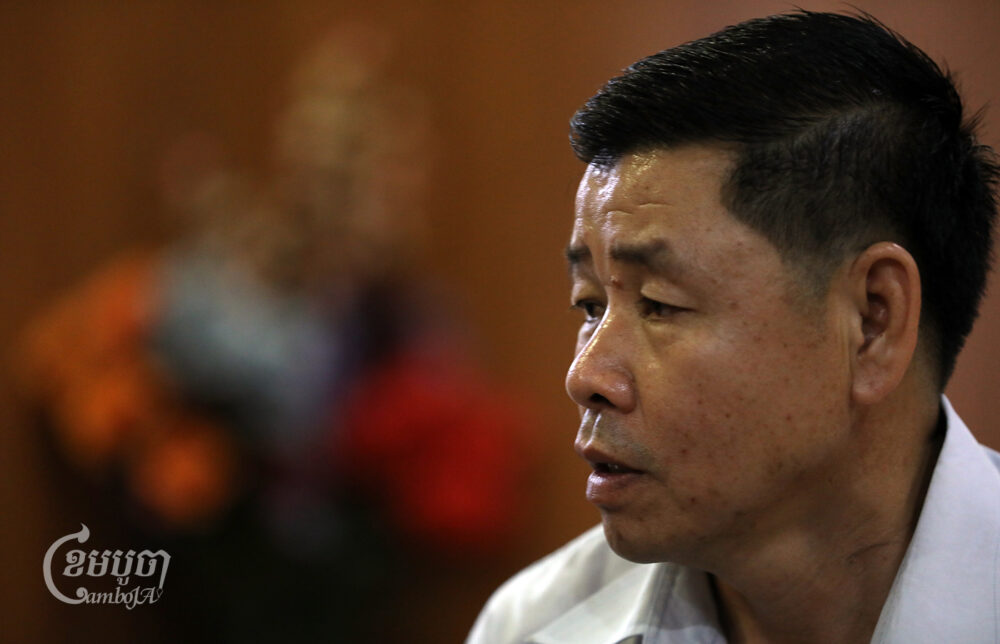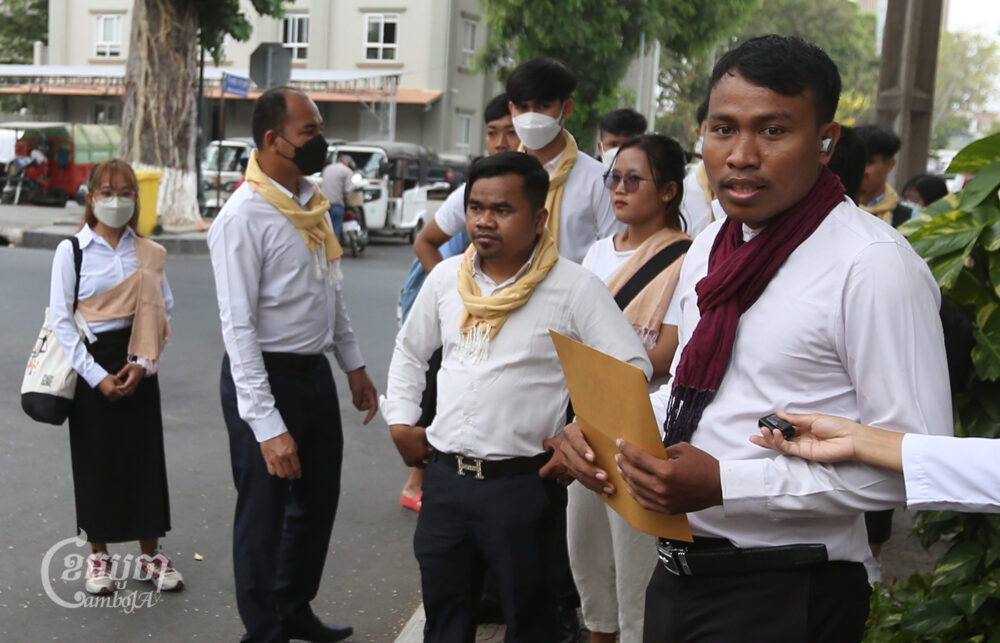Fishers, NGOs, and the government say individual fish catch on the Tonle Sap is low again this year. But while a government official said that is primarily due to population growth and illegal fishing, researchers and community members say the culprit is the extremely irregular water levels caused by upstream hydropower dams.
In Kampong Phluk commune, a fishing community in Siem Reap’s Bakong district, homes tower above the road on high stilts.
Normally, in the rainy season, the Tonle Sap lake floods the villages of Tnaot Kombot, Dey Krahorm, and Kok Kdol, turning its roadways into canals. From 2019 to 2021, flooding came only out of season, with the water arriving months late. This year, said Chhuon Lann, 46, the water rose as normal in July, only to start decreasing before increasing again in August.
“If the villagers do not catch fish, they are forced to migrate to other countries or provinces to find work. Also, when they migrate, they take their children with them, so they cannot study. Additionally, they owe more money to the bank,” she said, estimating that at least a quarter of the village no longer works in fishing.
In recent years, Ms. Lann — who has lived in this village her entire life and serves as the community treasurer — has witnessed significant changes to the water levels and corresponding decreases in fish catch.
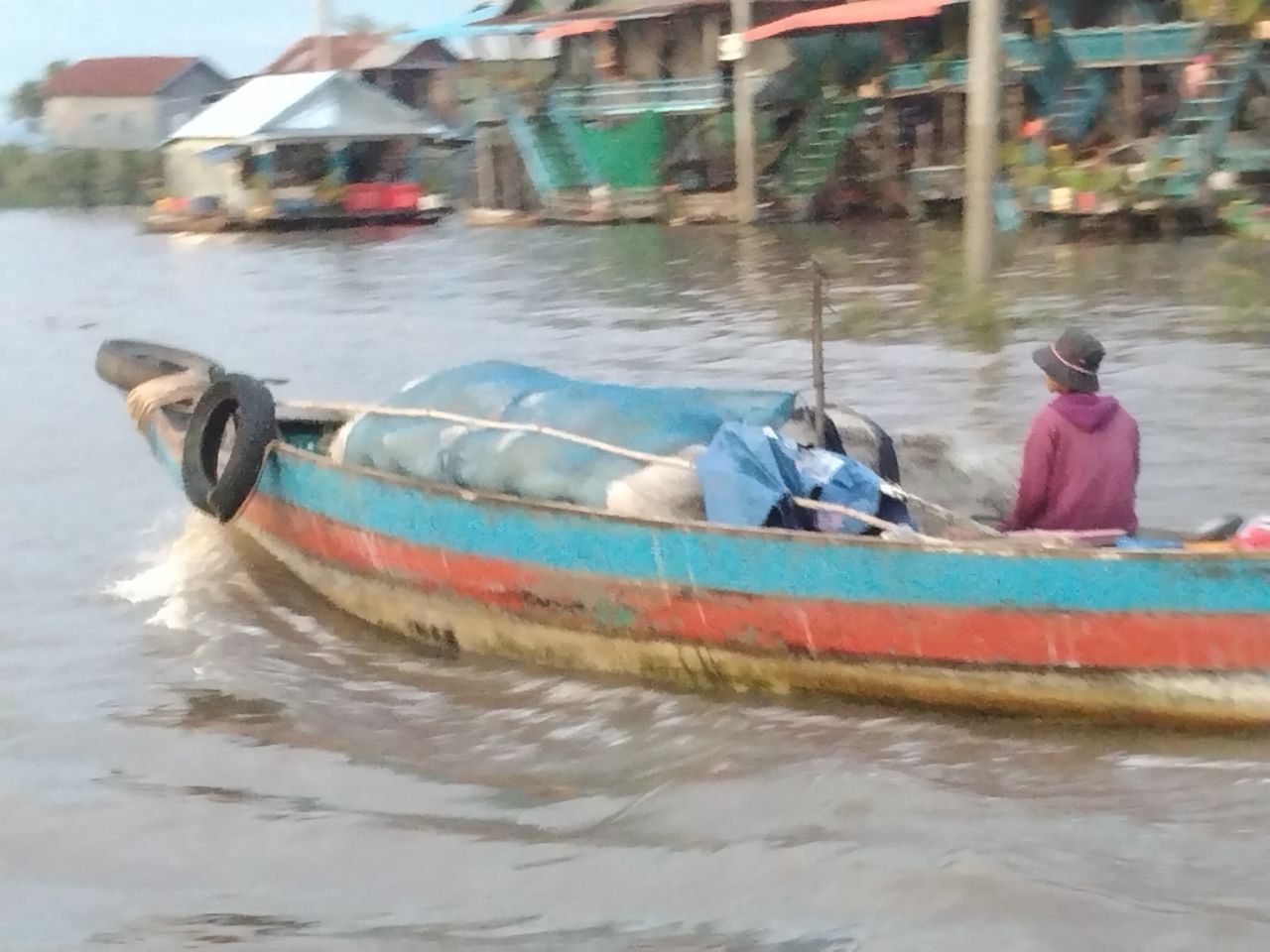
That fluctuating water level is primarily due to changes in hydrology caused by upstream hydropower dams. There are 11 dams on the mainstem of the upper Mekong, in China, and hundreds more on the tributaries of the lower Mekong river. Because dams create energy by collecting water in the rainy season and releasing it in the dry season, they change how the Tonle Sap flood pulse operates, explained Minh Bunly, Coordinator of the Conservation Program of the Fisheries Action Coalition Team (FACT)
“The construction of dams is a part of why there are irregular water levels.” Before the construction of the dams, water would have filled the Tonle Sap river by August, with the level stable through September and October — before the river began reversing course in November. Now, the water remains low or fluctuating throughout August.
“Therefore, FACT asks other countries as well as the Cambodian Royal Government to consider as much as possible in terms of reconsidering the construction of Hydropower dams along the Mekong River.
The large-scale government crackdown on illegal fishing which took place earlier this year could have some impact in improving fish catch, said Mr. Bunly, but it can’t address the bigger problem caused by low water levels.
Insufficient flooding means fewer fish — with water failing to reach grasslands and rice fields that serve as spawning grounds for many species.
“Thus, the probability of spawning, which keeps fish populations growing, is difficult to predict,” he said.

For Peng Savon, a 50-year-old fisher living in Kok Kdol village, Kampong Phluk commune, in Siem Reap’s Prasat Bakong district, the heavy rains of late have done little to improve water levels.
“This year, there are not many fish to catch because the water is not high enough,” she said.
Lately, she said, she and her husband have been moving from flooded forest to flooded forest, only to come up with empty nets. With five of her seven children still in school, Ms. Savon said she is struggling to survive.
“I am concerned that if the situation remains irregular, each villager will lack food,” she said.
“It is called the water rising-season, but there is no rising water so I think maybe there is water but it is stored by dams everywhere,” Savon said.
To make ends meet, the family also raises farmed fish. Last year, she earned about 3 million riel from selling her fish. But with 5 million riel still owed on a $2,000 loan she took out in 2019, the money has not gone far.
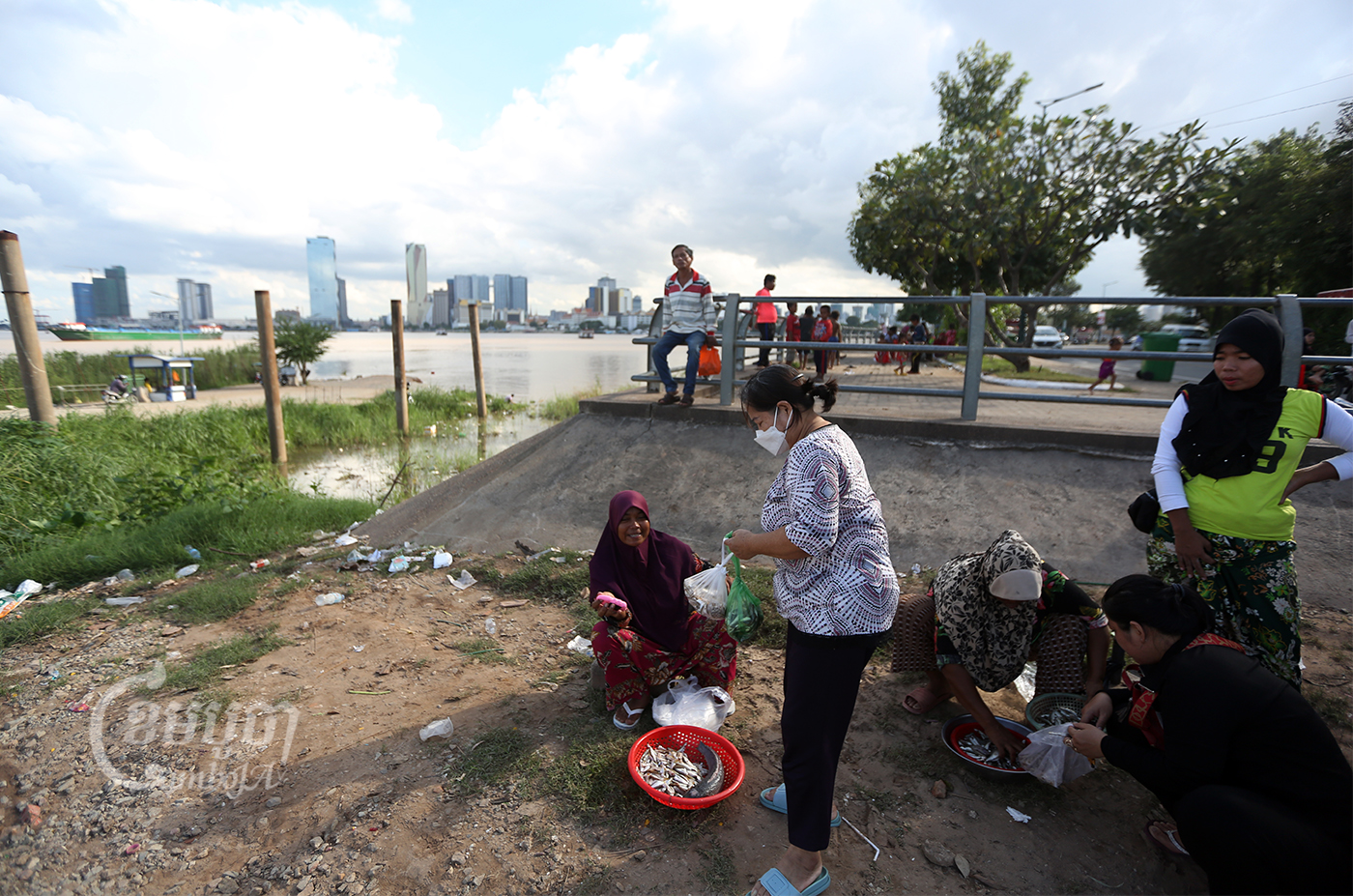
Lee Rithymeng, an official with the Fisheries Administration, told CamboJA that while hydropower dams had some impact on fish catch, fish yields have been impacted more by a growing population and illegal fishing. He added that the government was trying to encourage fishers to farm fish to meet the need.
“To solve the problem faced by fishermen, first relevant bodies must participate in protecting the fishing area together,” he added. “Therefore, the people who are fishermen must protect all those resources for themselves and they should not use any [illegal] fishing gear.”


